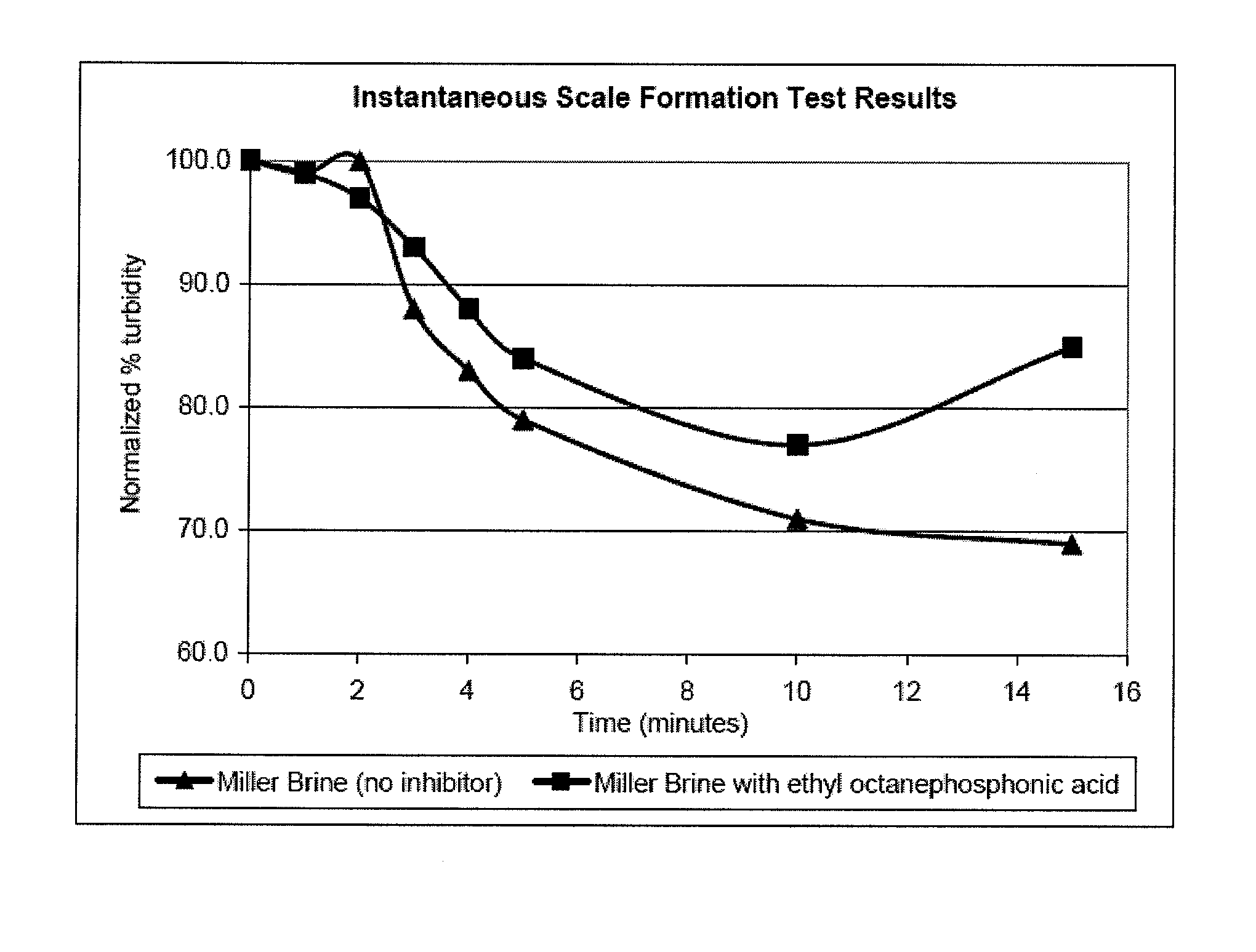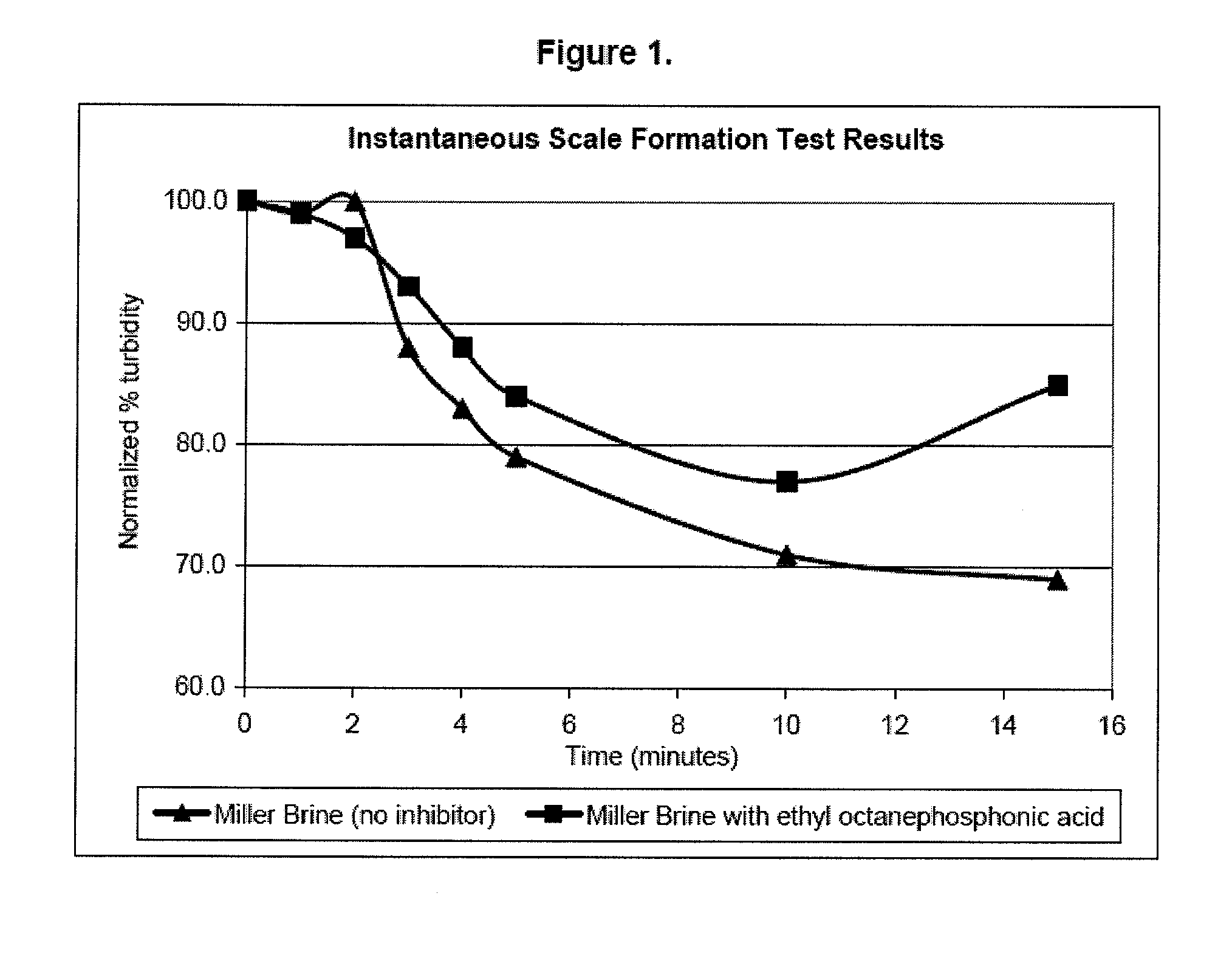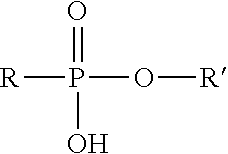Methods of Using Hydrocarbon Gelling Agents as Self-Diverting Scale Inhibitors
a hydrocarbon gelling agent and scale inhibitor technology, applied in fluid removal, chemistry apparatus and processes, borehole/well accessories, etc., can solve the problems of scale formation on the equipment used to extract oil from the field, severe scale formation problems, and reduce the production capacity of a subterranean well. , to achieve the effect of reducing the formation of scal
- Summary
- Abstract
- Description
- Claims
- Application Information
AI Technical Summary
Benefits of technology
Problems solved by technology
Method used
Image
Examples
examples
[0036]Instantaneous scale formation was tested under Miller Field (North Sea) conditions. Miller Field is known to have scale problems when the formation brine mixed with sea water. The test was conducted by creating a test Miller Filed formation water and a test Miller Filed sea water having the following compositions:
Formation Water (per 1 L)Sea Water (per 1 L)0.24g BaCl2 × 2 H2O1.06g CaCl2 × 2 H2O6.06g SrCl2 × 6 H2O11.8g MgC2 × 6 H2O89.4g NaCl0.02g SrCl2 × 6 H2O52.94g CaCl2 × 2 H2O0.8g KCl15.06g MgCl2 × 6 H2O4.14g Na2SO40.2g NaHCO324.8g NaCl
[0037]Three tests were conducted. The first test involved combining the formation water and the sea water with no inhibitor while the mixture was being stirred, this test was observed visually and displayed instant turbidity. In addition, the first test was monitored using a Cole-Palmer Spectrophotometer 1200 at 860 nm, the results of which can be seen in FIG. 1. For the second test 100 ppm of isopropyl octanephosphonic acid was added to the f...
PUM
 Login to View More
Login to View More Abstract
Description
Claims
Application Information
 Login to View More
Login to View More - R&D
- Intellectual Property
- Life Sciences
- Materials
- Tech Scout
- Unparalleled Data Quality
- Higher Quality Content
- 60% Fewer Hallucinations
Browse by: Latest US Patents, China's latest patents, Technical Efficacy Thesaurus, Application Domain, Technology Topic, Popular Technical Reports.
© 2025 PatSnap. All rights reserved.Legal|Privacy policy|Modern Slavery Act Transparency Statement|Sitemap|About US| Contact US: help@patsnap.com



